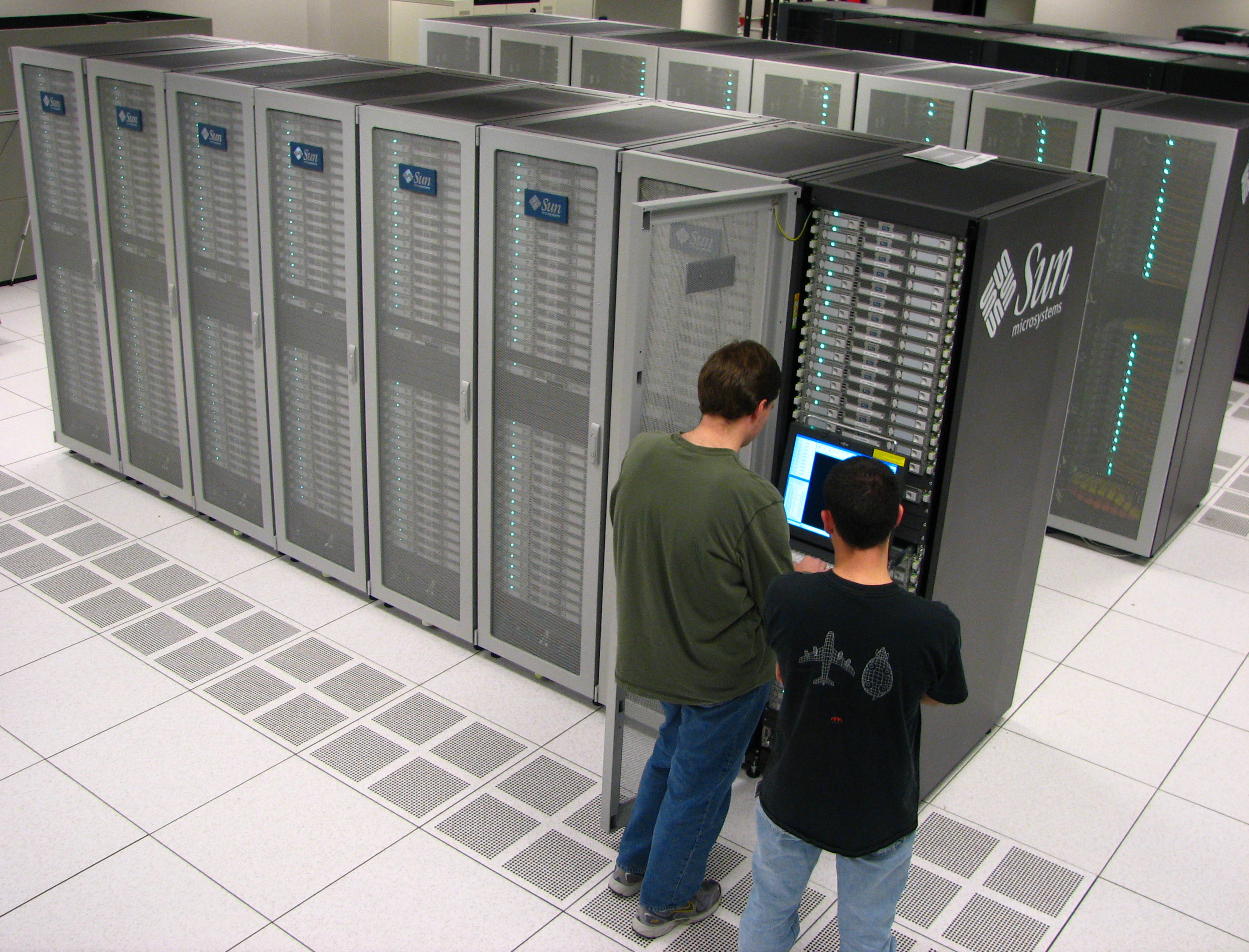Contact: Phil Hearn

STARKVILLE, Miss.--Mississippi State's new "Raptor" supercomputer is the 18th most powerful computer system among American universities, according to the latest international rankings.
Able to perform more than 10 trillion calculations per second, the university supercomputer is ranked in the November 2006 edition of the Top500 Supercomputing Sites. The rankings were compiled and released by the universities of Tennessee and Mannheim (Germany).
Recently installed at MSU's High Performance Computing Collaboratory, the 2,048 processor computing cluster called Raptor also is listed as the 39th most powerful academic computer in the world.
Of the 17 other U.S. academic computers ranked ahead of MSU's Raptor, however, eight are National Science Foundation-funded systems located at three sites. Considered "national assets," these include five at the University of Illinois at Urbana-Champaign, two at the University of California at San Diego and one at the University of Pittsburgh.
"Several of the U.S. academic systems ranked ahead of us are located at the same site," said professor David Shaw, director of MSU's GeoResources Institute. "As a (stand-alone) site, MSU ranks 13th among U.S. academic sites with Top500 systems.
"This supercomputer keeps MSU in the league of major university research programs that focus on high-performance computing--institutions like the University of Texas, Harvard University and California Institute of Technology," added Shaw, chair of the HPC2 Operations Board. Austin-based U.T. topped the list among U.S. academic computer sites.
MSU's Raptor is the fastest computer system at any Southeastern Conference university. Vanderbilt is ranked 30th; Louisiana State, 31st; and Florida, 34th. They are the only other SEC schools making the Top500 list.
Overall, the Raptor is listed as the 115th most powerful academic and non-academic computer in the world.
Five other computer systems located in Mississippi also made the list. They include one at the U.S. Army Corps of Engineers Research and Development Center in Vicksburg, ranked 26th in the world; and four operated by the Naval Oceanographic Office at the Stennis Space Center in Hancock County, respectively ranked 35th, 48th, 58th and 277th overall.
The Top500 Supercomputing Sites list was started in 1993 to provide a reliable basis for tracking and detecting trends in high-performance computing. Twice a year, a list of the 500 most powerful computer systems in the world is assembled and released.
"An MSU or HPC2 computer system has been ranked on 16 of the last 22 Top500 lists, dating back to June 1996," noted Colin Scanes, MSU vice president for research and economic development.
The complete Top500 list may be viewed at www.top500.org.
The Raptor was installed earlier this year at HPC2, which is a university-wide multidisciplinary research program that currently houses five research centers. The computer is more than four times faster than the most powerful system previously housed at the site, an IBM model called Maverick.
"If you sat down with a pencil and paper, and began doing one long-division problem per second, it would take you almost 340,000 years to accomplish what this system can do in a single second," said Trey Breckenridge, high-performance computing resources and operations administrator at HPC2.
Connecting 512 smaller computers together, the Raptor cluster uses servers made by Santa Clara, Calif.-based Sun Microsystems Inc. Each of the model X2200 M2 servers has two Opteron 2218 processors manufactured by Advanced Micro Devices, headquartered in Sunnyvale, Calif.
Because existing computers previously used by HPC2 were operating at capacity, the Raptor is expected to greatly strengthen the MSU research unit's efforts in solving problems related to automotive crash simulations, weather and ocean modeling, missile aerodynamics, and the design of more efficient jet engines.
NEWS EDITORS/DIRECTORS: For more information, contact Roger Smith at 662-325-3625 or roger@hpc.msstate.edu. The HPC2 Web site is www.hpc.msstate.edu.
For more information about Mississippi State University, see http://www.msstate.edu/.